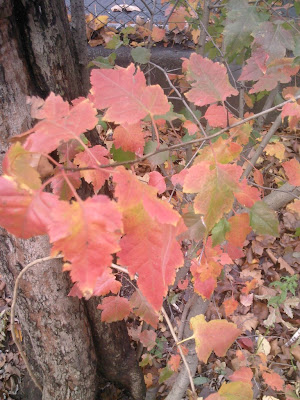 Jennie Brownscombe, 1914
Jennie Brownscombe, 1914In 1621, the Plymouth colonists and Wampanoag Indians shared an autumn harvest feast which is acknowledged today as one of the first Thanksgiving celebrations in the colonies. This harvest meal has become a symbol of cooperation and interaction between English colonists and Native Americans. Although this feast is considered by many to the very first Thanksgiving celebration, it was actually in keeping with a long tradition of celebrating the harvest and giving thanks for a successful bounty of crops. Native American groups throughout the Americas, including the Pueblo, Cherokee, Creek and many others organized harvest festivals, ceremonial dances, and other celebrations of thanks for centuries before the arrival of Europeans in North America.
The Pilgrims' Menu (Foods That May Have Been on the Menu)
Seafood: Cod, Eel, Clams, Lobster
Wild Fowl: Wild Turkey, Goose, Duck, Crane, Swan, Partridge, Eagles
Meat: Venison, Seal
Grain: Wheat Flour, Indian Corn
Vegetables: Pumpkin, Peas, Beans, Onions, Lettuce, Radishes, Carrots
Fruit: Plums, Grapes
Nuts: Walnuts, Chestnuts, Acorns
Herbs and Seasonings: Olive Oil, Liverwort, Leeks, Dried Currants, Parsnips
Thanksgiving Fun Facts Over the Years...
Though many competing claims exist, the most familiar story of the first Thanksgiving took place in Plymouth Colony, in present-day Massachusetts, in 1621. More than 200 years later, President Abraham Lincoln declared the final Thursday in November as a national day of thanksgiving. Congress finally made Thanksgiving Day an official national holiday in 1941.
Sarah Josepha Hale, the enormously influential magazine editor and author who waged a tireless campaign to make Thanksgiving a national holiday in the mid-19th century, was also the author of the classic nursery rhyme "Mary Had a Little Lamb."
In 2001, the U.S. Postal Service issued a commemorative Thanksgiving stamp. Designed by the artist Margaret Cusack in a style resembling traditional folk-art needlework, it depicted a cornucopia overflowing with fruits and vegetables, under the phrase "We Give Thanks."
 Vitis labrusca, Concord grapes
Vitis labrusca, Concord grapesThe cranberry is one of only three fruits—the others are the blueberry and the Concord grape—that are entirely native to North American soil, according to the Cape Cod Cranberry Growers' Association.
Originally known as Macy's Christmas Parade—to signify the launch of the Christmas shopping season—the first Macy's Thanksgiving Day Parade took place in New York City in 1924. It was launched by Macy's employees and featured animals from the Central Park Zoo. Today, some 3 million people attend the annual parade and another 44 million watch it on television.
Snoopy has appeared as a giant balloon in the Macy's Thanksgiving Day Parade more times than any other character in history. As the Flying Ace, Snoopy made his sixth appearance in the 2006 parade.*
*Information from History.com
All of us at The Horticultural Society of New York would like to extend our wishes for a safe and happy Thanksgiving Holiday, to all of you!










